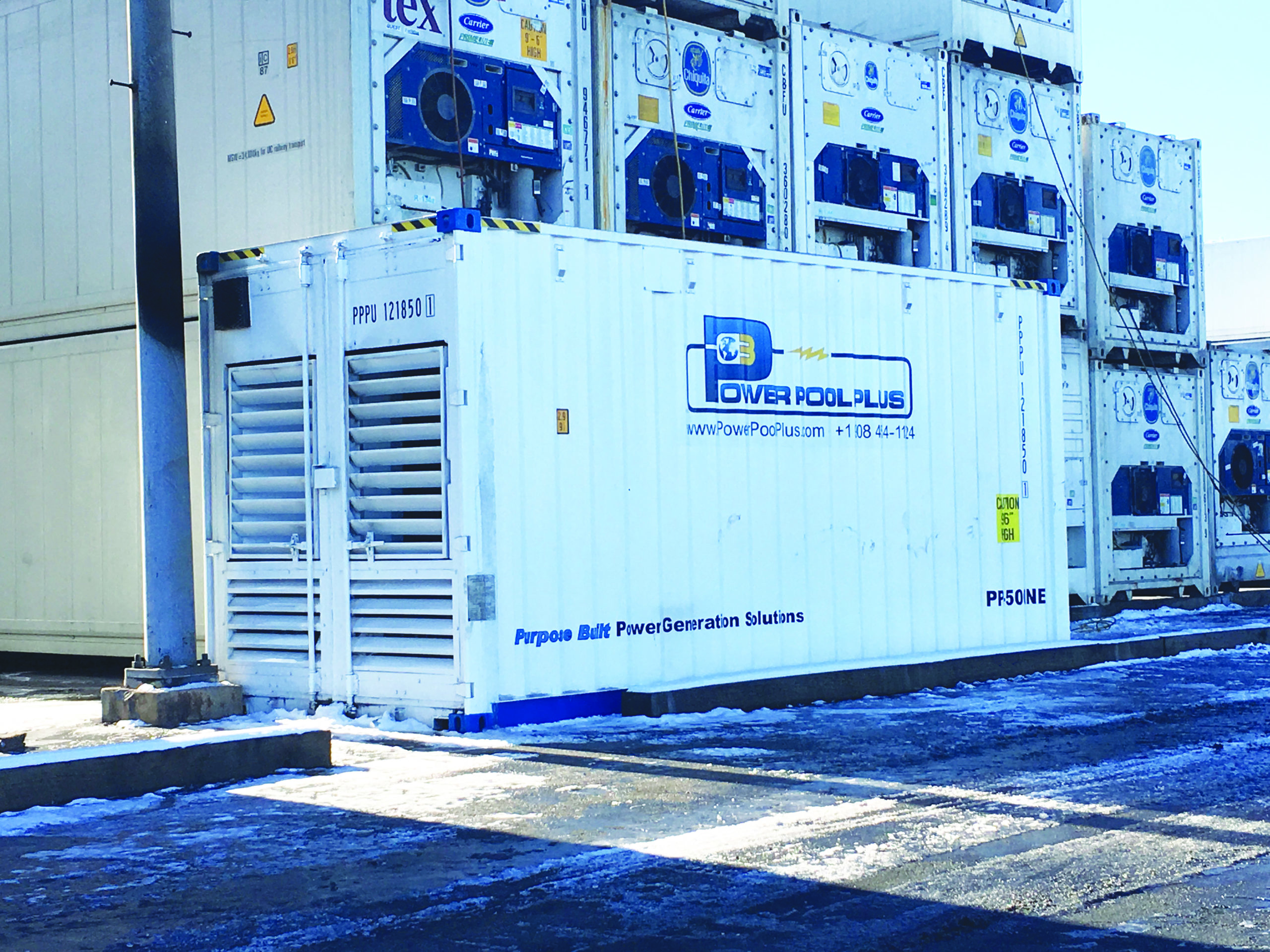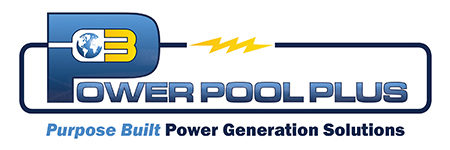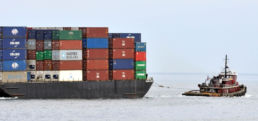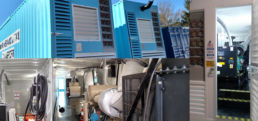Custom Generator Solutions for Refrigerated Cargo
As the demand for transporting temperature-sensitive goods continues to rise, the importance of reliable refrigerated transport (reefer) solutions has never been more critical. From pharmaceuticals to perishable food items, ensuring these goods reach their destination in pristine condition is a top priority for shipping companies. Custom built power generation solutions for refrigerated transport are key to meeting these stringent requirements. Here’s a look at how custom reefer genset solutions are powering the cold chain logistics industry.
Understanding Reefer Gensets
Reefer gensets, or refrigerated generators, are specialized power generation units designed to maintain the necessary temperature controls within refrigerated containers during transport. These units are essential for the movement of refrigerated cargo, particularly when transported via trucks, trains, or ships where access to a stable power source is not always guaranteed.
Why Custom Solutions?
Every refrigerated transport operation has its unique set of challenges. Factors such as the type of goods being transported, the duration of the shipment, and the specific temperature requirements all necessitate tailored power solutions. Custom power generation solutions for refrigerated transport are designed to meet the precise needs of each shipment, ensuring optimal performance and reliability.
Custom Reefer Genset Solutions
Custom reefer genset solutions take into account the cargo's size, weight, temperature sensitivity, and the journey's length to ensure that the goods remain at the right temperature throughout transit. By customizing the power generation units, companies can avoid the one-size-fits-all approach, which may not be suitable for all types of refrigerated cargo.
Benefits of Customization
The benefits of opting for custom reefer genset solutions include increased efficiency, reduced operational costs, and enhanced protection for sensitive goods. Customization can lead to gensets that are more fuel-efficient, have better temperature control, and are designed to fit perfectly with the transport containers in use. This tailored approach can also extend the lifespan of the gensets, as they are built to withstand the specific conditions they will face.
Innovation in Refrigerated Cargo Power
The refrigerated cargo shipping industry continues to innovate, with new technologies improving the efficiency and sustainability of reefer gensets. Companies now offer gensets with smart monitoring systems that allow for real-time tracking and adjustments to temperature settings. These advancements ensure that custom reefer genset solutions are not only reliable but also at the forefront of technology.

Partnering with Experts
When it comes to acquiring custom reefer genset solutions, partnering with an experienced manufacturer like Power Pool Plus is crucial. Our team of experts can assess your specific requirements and design a power generation solution that aligns with your operational needs. With the right partnership, you can secure the robust and reliable reefer generators necessary for successful refrigerated cargo shipping.
Custom built power generation solutions are integral to the success of refrigerated transport. With the right genset in place, companies can ensure that their temperature-sensitive goods are transported safely and efficiently, maintaining quality and freshness upon arrival. As the industry evolves, Power Pool Plus's custom solutions will continue to play a pivotal role in the advancement of refrigerated cargo power.
How to Avoid Port Congestion?
Photo Credits: Michael Neelon/Alamy; Columbia Group
Recent port expansion projects around the world are a sign of the competitiveness to attract some of the newest and biggest container ships. What has been slower to keep pace is the supporting infrastructure in surrounding areas. Roadways leading in and out of terminal gates are creating truck traffic gridlock at many ports. Sensitive refrigerated cargo is at risk if not moved quickly.
As more and more port operators are turning to alternative methods for moving their cargo off terminal, barge service has become much more viable. Utilizing existing waterways, barges offer the ability to bypass this congestion by moving cargo from the main port to areas more easily accessible to trucking and rail.
This is especially important for refrigerated cargo where timing is critical.
Yet moving reefer by unmanned and unpowered barge can present a host of challenges for the reefer cargo operator.
Power challenges for the barge operator
- Conformity of reefer diesel generators, or power packs, to the business of container handling. The greater its design fits into the regular operation the faster barge loading and unloading can occur.
- Long transit times without the ability to refuel can present a major barrier to the barge operator.
- Limited space; tightly packed containers on barges leave little room for diesel powered generators to breathe.
- Proximity to salt air and water environments, especially during heavy seas, can be problematic for mechanical equipment.
- Generator failure while in transit is a recognized concern to maintaining operational success for the reefer barge operator.
Power Pool Plus has been addressing these challenges for nearly 30 years by engineering and building power pack designs that are Purpose Built to deliver a reliable and continuous reefer power supply over multiple days of unmanned overseas transit.
What Does it Mean to be Purpose-Built?
If you’re in the business of handling refrigerated cargo, then you know all too well about the constant reliance on electrical power to keep your perishable cargo fresh (at least while it's under your watch). The need for generators to supply this electric power is great.
Using standby generators that are designed for emergency use may not be the best solution for managing the harsh realities of the reefer cargo industry.
What’s required is a purpose-built solution that can provide substantial electrical supply in a robust package that fits neatly into the working environment of the shipping industry.
But what does Purpose-Built mean?
 To be purpose-built a product must have the ability to complete a specific task so uniquely that every aspect of its design takes the following elements into account:
To be purpose-built a product must have the ability to complete a specific task so uniquely that every aspect of its design takes the following elements into account:
- How it is going to be used? (Application)
- Where it will be used? (Environment)
- Who will be using it? (Safety)
- When it will be used? (Time Frame)
Power Packs, generators designed for powering refrigerated containers, are an example of such a product. But not all power packs are created equal. Simply being called a Power Pack does not make it purpose-built for reefer cargo application.
Power Pool Plus takes all of the above elements into consideration when designing power packs.
How it will be used (Application)
 Our Power Packs are designed to be easily handled in and around a port environment including ships and barges. Outfitted with both fork pockets and corner pockets our power packs can be easily moved or positioned by any heavy lift port equipment.
Our Power Packs are designed to be easily handled in and around a port environment including ships and barges. Outfitted with both fork pockets and corner pockets our power packs can be easily moved or positioned by any heavy lift port equipment.
For use on a barge, space is limited. Yet maintaining proper airflow is critical to power pack performance. We take that into consideration while still allowing our machines to stack neatly between containers.
Where it will be used (Environment)
 Uneven ground, constant repositioning, salt air/water, extreme heat and humidity, cold arctic waters – these are just some of the harsh realities of keeping the cold chain intact. Our power packs are designed and built with these considerations.
Uneven ground, constant repositioning, salt air/water, extreme heat and humidity, cold arctic waters – these are just some of the harsh realities of keeping the cold chain intact. Our power packs are designed and built with these considerations.
Who will be using it (Safety)
 In ports things move fast and keeping people safe is priority #1. Power Pool Plus goes to great lengths to ensure this is met.
In ports things move fast and keeping people safe is priority #1. Power Pool Plus goes to great lengths to ensure this is met.
To reduce the risk of electric shock, we use only ESL’s line of safety interlock receptacle modules. This ensures safe handling of electric plug connections made at the Power Pack panel.
When it will be used (Time Frame)
 How long will your power pack need to run unattended? Fuel delivery in ports can be a big problem. And on barges, it’s impossible until next port call. Our power packs are designed with standard 1000 gallon (3785l) fuel tanks ensuring long runtimes of 36 to 48 hours depending on use and application. Additionally, our on-board engine lubricant reserve tanks with automatic refilling are essential to avoid low oil engine shutdowns during unattended operation on sea or land.
How long will your power pack need to run unattended? Fuel delivery in ports can be a big problem. And on barges, it’s impossible until next port call. Our power packs are designed with standard 1000 gallon (3785l) fuel tanks ensuring long runtimes of 36 to 48 hours depending on use and application. Additionally, our on-board engine lubricant reserve tanks with automatic refilling are essential to avoid low oil engine shutdowns during unattended operation on sea or land.
Of course, these are just some of the standard purpose-built features that set Power Pool Plus apart.
Have a very unique requirement?
Our engineering team can design a purpose-built power pack specifically for you. Just let us know the details.



